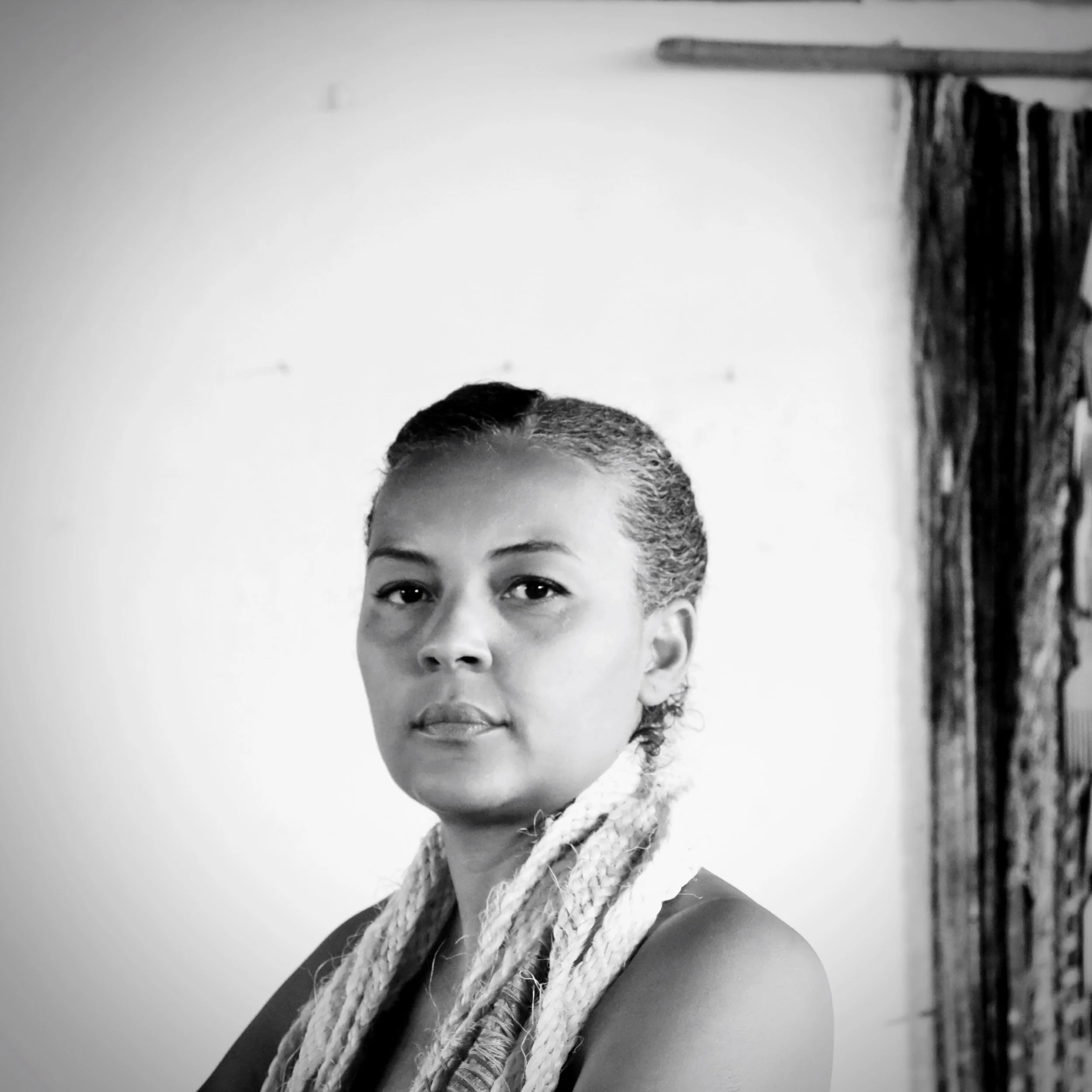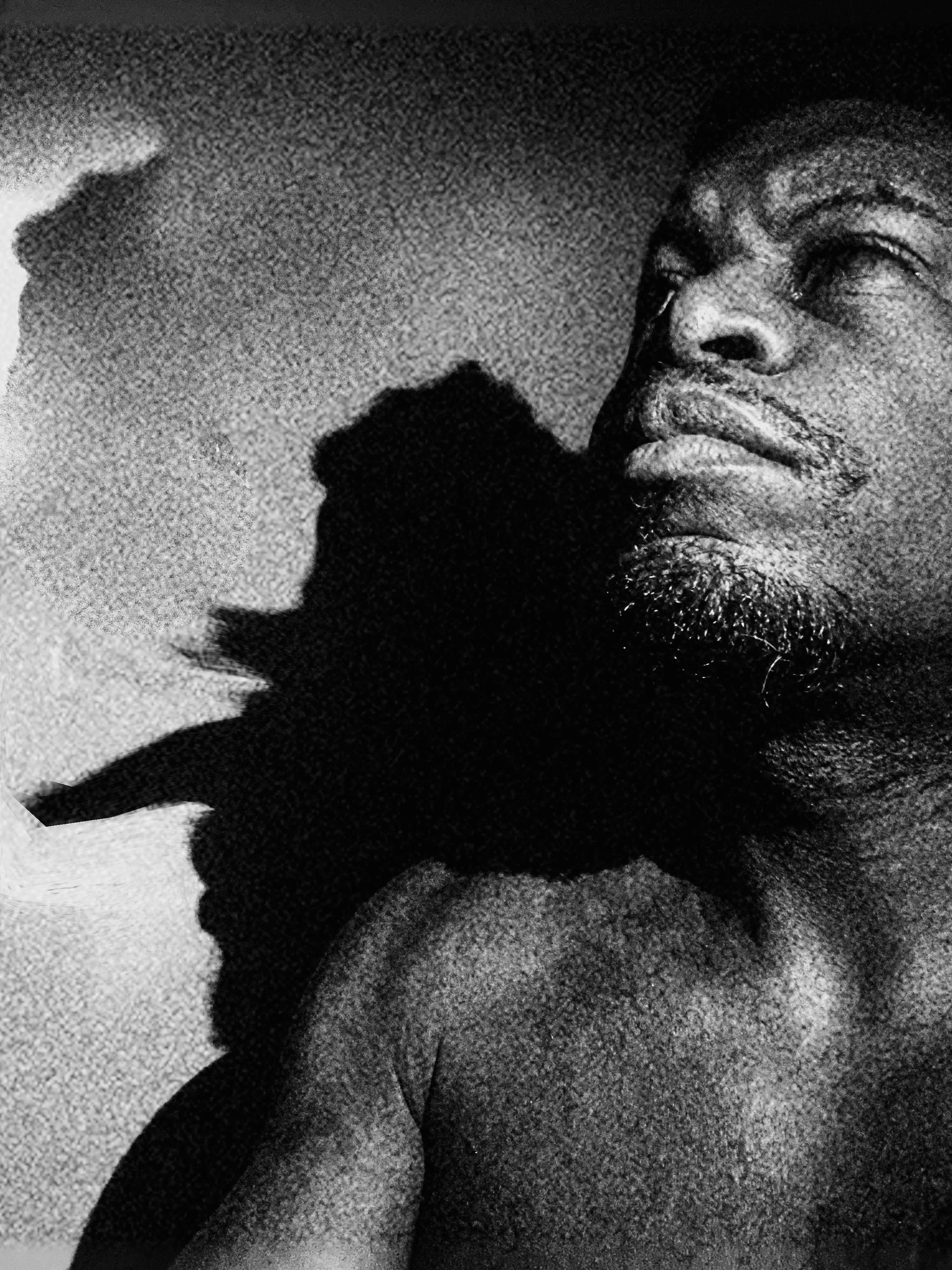ALIZA MORELL'S night blossoms
Disembodied hands weave sinewy threads sprouting vibrant flowers set against an inky blackness in Night Shift, an exhibition of paintings by Aliza Morell on display through July 15, 2023, at NYC’s Massey Klein Gallery. In this interview, Morell discusses the subconscious explorations at the core of these works.
Interview by Interlocutor Magazine
The title for this show, Night Shift, comes from Cormac McCarthy's essay The Kekulé Problem, in which he explores the mysteries of the ways that problem-solving and creative thinking are worked out in the unconscious mind. When did you first encounter this essay, and how did it directly inspire your approach to creating this series?
When I learned about the essay, I had already started this body of work and thought it was a generative framework to think about the paintings as I pushed forward. At the time, I was in an ongoing conversation with an artist friend about the subconscious. They’re a fan of McCarthy’s books and came across a rare, recorded interview with him in which, among many things, he discusses the concept of the Night Shift. My friend referred me to it, and from there, I found McCarthy’s Kekulé essay online and was hooked. I should mention that the author passed away several weeks after the show opened, and I feel very lucky to have been in dialog with these ideas during his lifetime.
As McCarthy’s only work of non-fiction, it was a lucky find for me. Brilliant as he is, I’m not a fiction reader, and the violence he’s known for is outside my wheelhouse. I mostly read about the natural world—things like ecosystems, mycology, color, etc. Like McCarthy’s essay, I gravitate toward fields of science that evade classification and challenge our preconceptions. I find a lot of metaphors for painting in these subjects. In his wonderful book about fungi, Entangled Life, Merlin Sheldrake compares the awakening effect that can take hold of our senses after watching a magician perform tricks to his experience researching fungi. “Tricked out of our expectations, we fall back on our senses. What’s astonishing is the gulf between what we expect to find and what we find when we actually look.”
In The Kekulé Problem, McCarthy posits that the actual thinking process is an extra-linguistic affair. “Why is the unconscious so loathe to speak to us? Why the images, metaphors, pictures? Why the dreams, for that matter,” he asks, explaining that his friend, George Zweig, coined this phenomenon “The Night Shift.” The title for my show extends this concept to include the labor of painting and to describe the images where repeating forms shift and echo in black fields. In terms of an approach, it’s about all the material we collect for our work when we’re not actually looking. It’s also about suspending language in the process of working, to look for something new.
All this said, many people work jobs at night to support themselves and their families, and that’s not lost on me. If I weren’t stubborn enough to go to the studio after my day job throughout my life, I wouldn’t be a painter today. That kind of night shift is a privilege, though!
THE PRACTICE, 2023, Oil and acrylic on linen, 36 x 28 in, 91.4 x 71.1 cm
SYMPATHETIC MAGIC, 2023, Oil and acrylic on linen, 58 x 46 inches
Deep black backgrounds are the basis for all the works in this series - what is the thematic and foundational significance of this for the paintings in Night Shift?
I’ve drawn inspiration from the landscape at night in different ways throughout my life. In terms of my process, the black grounds grew out of an earlier body of work depicting neon signs in darkened windows. Nowadays, the black plays a central role formally and also becomes a character in the work.
I hope these fields read both as surfaces and as spaces, underscoring the searching quality of the work. In physical material, black is the sum of all colors, representing every painting that could have been. In that way, the grounds become affirmations of what actually manifests. In light, black represents the absence of all color, like a void, allowing for the vivid luminosity of the images that emerge within it.
NEW MOON, 2023, Oil and acrylic on linen, 28 x 22 inches
Disembodied hands are also omnipresent in the paintings - what is the significance of their separation from the body, and what are they symbolizing?
A breakthrough painting in the show is called “Free Agents”. The movement of vines is composed around a lime-yellow hand parting a spiraling tendril to one side, and a shadowy slate-colored palm hovering centrally, lifelines exposed, gently refusing further entry. These hands are free agents. They don’t belong to a body, or even to each other. They’re like spirits choreographing a painting according to their own poetic will.
My earliest interest in hands as a subject started when I was studying painting in Italy years ago. Images of angels and religious figures filled the churches and museums I toured, and it seemed to me like their divinity registered in their hands. In my work, the hands are moving softly, which aligns with my attitude about painting as a way of resisting the speed and constant utility of life. These are romantic, mysterious places, and they don't have to be accomplishing something. They're activating the space, and that's their purpose.
In lucid dreaming, examining your hands is a technique to distinguish whether you’re sleeping, going back to the unconscious mind. Hands also represent touch and the agency to make a painting, taking impressions from the dream world into the reality of an object.
FREE AGENTS, 2023, Oil and acrylic on linen, 58 x 46 inches
The plant life and blossoms in the works emerge from vine-like lines that appear to be suspended in the inky black space, with no apparent roots or sources - what particular real-life botanical forms and flowers inspired these depictions?
I’ve been using flowers in my work for a long time because they can represent so many things based on their treatment while performing effortlessly as vessels for color and instruments of composition. Love, seduction, transience, mourning, resurgence.
Massey Klein recently hosted a Q&A at the show and a painter asked me if these flowers, with their funneling geometry, were a metaphor for the astral or a tool, like a portal, for taking viewers into this world. That was a gift of a question! I couldn’t hope for anything more.
This particular blossom emerged in the work after a night-blooming moonflower sprouted in an improbable patch of dirt and litter on my walk home from the studio. I’d never seen one before and was enchanted by its surprising scale and bright white, cylindrical petal, reflecting the ambient light and passing cars. I stopped at it whenever I passed and took pictures, which became drawings, which eventually grew into these paintings.
NIGHT SHIFT, 2023, Oil and acrylic on linen, 28 x 22 inches
How did you approach your use of color in the works, and what were some challenges with achieving a harmonious mix of colors against the black backgrounds?
Color is the lifeblood of these images. I’m not synesthetic in the definitional sense but I relate to color on a musical level. I don’t use colors to describe objects literally, but rather, to hit the right notes. In that way, I’d describe my first approach to color as sensorial.
On a practical level, of course, I’m approaching color very materially. The black grounds have an amplifying effect on my colors visually, but because every color handles differently with unique opacities and working properties, it takes a lot of technical workarounds to achieve the even surface, or flatness that I’m after. That kind of problem-solving is something I really enjoy figuring out.
Color is also phenomenological. In the book Full Spectrum, Adam Rogers describes how humanity evolved in tandem with the development of new pigments. “We learn to see, and then we learn to create, and then we learn more about how we see from what we’ve created. It’s a grand oscillation between seeing and understanding.” In this world, the experience of color, and what it is actually depicting, intertwine. If I were to describe what these forms are made of, representationally, I wouldn’t say skin or petals, but color itself. It’s an abstract idea, but also, somewhat literal.
UNDERCURRENT, 2022, Oil and acrylic on linen, 28 x 22 inches
What was your technique for achieving such clean and sharp definitions of the lines and colors against the black fields?
All of these works begin as scale drawings on paper. Things move around dramatically, getting drawn, erased, shifted, and re-drawn. Often, the paper gets so worn that I cut up the drawing and begin collaging the pieces onto a new sheet. When I’ve finally found the form, I create something like a Renaissance cartoon, albeit with pretty idiosyncratic materials, and transfer the scale image onto the canvas.
I also mix all of the colors in a painting on a large glass palette before I begin so I can test out and massage the relationships. I mix and save enough of each color to last the weeks or months a piece takes to complete, so that I can always come back to exact shades. The painting process happens in layers so I’m able to refine the edges by hand as I go. It took a lot of trial and error to work out the process, and the images evolved alongside that work. It’s ongoing, because I’m constantly getting excited about new materials and techniques.
Who are some artists, and/or which specific artworks inspired this series visually and thematically?
In terms of historical figures, I’ve been thinking a lot lately about Agnes Pelton, who made arresting symbolist paintings about spirituality. I also have to call out Joseph Albers, whose work has taught so many to wield the magic of color incisively. My peers are my number one source of inspiration visually, though. It can be quite indirect because I’m engaged with such a wide scope of work, seeing shows, doing studio visits with friends, and looking at images constantly. There are artists in my community and wider sphere of influence whose work I wish I could make. I think you just have to take it all in, though, and chip away at your own thing. I arrived at where I am by following my own work, through the dark at times, and sticking with it.
Night Shift is on display at Massey Klein Gallery, 124 Forsyth Street, New York, NY, through July 15, 2023.
Aliza Morell holds an MFA from Mason Gross School of the Arts at Rutgers University (2014) and a BFA from The School of the Art Institute of Chicago (2005). Morell’s work has been shown at numerous venues in New York including Thierry Goldberg Gallery, Knockdown Center, Elijah Wheat Showroom, Pioneer Works, and Small Editions, as well as Glass Rice (San Francisco, CA), Tinney Contemporary (Nashville, TN), Tempus Projects, (Tampa, FL), and Camayhus Gallery (Atlanta, GA), among many others. Additionally, work by the artist has been presented at SPRING/BREAK Art Show in New York and PULSE Miami Beach.
Morell’s work has been featured in New American Paintings (2022, 2017, 2014), Hyperallergic, Create Magazine, and Two Coats of Paint. The artist has completed a number of artist residencies, including Vermont Studio Center (Johnson, VT), ACRE (Steuben, WI), Oxbow (Sautatuc, MI), and Harold Arts (Chesterhill, OH). Morell currently lives and works in Ridgewood, Queens.












